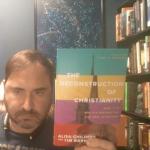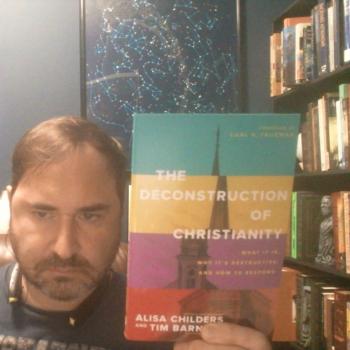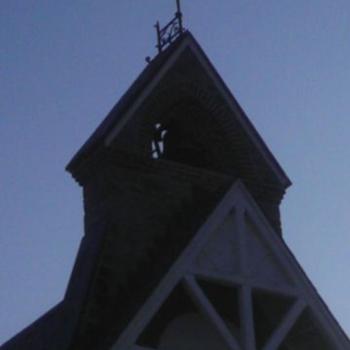The movement most prominently embattled against Christianity in the United States has been labeled the “Deconstruction Movement.” But what is this movement, how did it arise, and what is the history leading up to it?
The Founding of the United States
Christianity has been an ever-present force in American culture, with the United States largely being founded by Christian sects attempting to escape persecution by government-sanctioned religions in Europe. As a result of this history, one of the founding principles of the United States has been to keep religion and government entirely separate. For the most part this has worked as intended, as the government of the United States has not yet declared one religion the national religion, and tied religious practice to citizenship.
However, in the 1980s, a coalition of Christians with right-leaning politics attached themselves to the American Republican Party forming the so-called “moral majority,” and becoming a steady base of support to that party. While nothing akin to the government-sponsored religions of early Europe, the moral majority nevertheless stoked a kind of nation-wide resentment from those who did not ascribe to their values and doctrines. American Evangelicalism eventually became a political force in the minds of the wider culture, and to dissent from one was to dissent from the other.
The Emergent Church
In the late 1990s and early 2000s, this led to a movement which, at the time, was labeled “The Emergent Church.” In many ways the Emergent Church Movement closely resembles the current Deconstruction Movement. These church bodies gathered together largely to voice their criticisms of the politics – both national and internal – of the Evangelical church, and to commiserate with one another regarding the abuses and mistreatment they had received within the Evangelical environment. As well, the Emergent Church Movement tended to be very critical of the Bible and Christian doctrine, sanctifying their doubts and skepticism as a religious sacrament.
It was a way in which the participants could maintain the community and label of Christianity while jettisoning the baggage that came along with it.
New Atheism and Deconstructionism
Overlapping the Emergent Church Movement in the early and mid-2000s was the rise of the New Atheist Movement. In the United States, atheism had always been around, but it had been most prominent in elite and exclusive communities such as those found in academia and the arts. When it became a social movement, suddenly people had some place they could go to share their frustrations with Christianity, with the politics of Evangelicalism, and with Churches. They also had the tools to hit Christianity where it hurt: its beliefs and doctrines.
The method by which the Deconstruction Movement subsumed and replaced the New Atheist movement is a matter of interest. New Atheists had more or less united around public figures in the sciences: evolutionary biologists, astrophysicists, and psychologists. The general sentiment within New Atheism was that science would replace religion, with people like Stephen Hawking suggesting that even philosophy should be done away with in deference to science. Something important to note with this line of thinking is that it stresses an interest in truth. That is to say, pure empirical science is most interested in accuracy and a consensus reality under which everyone would be compelled to unite because it is true. The earth really is a sphere. Climate really is being influenced by human pollutants. Life on earth really did evolve over millions of years. Facts are facts, and no amount of religious belief can change that, say the New Atheists. Truth.
However, near the end of the 2010s a movement which had been present for some time rapidly overwhelmed culture and became its most potent driver: cultural progressivism. Superficially, progressivism was quite compatible with the New Atheism. Both movements aligned themselves with the political Left, and saw the political and religious Right Wing as an enemy to progress. However, there was a philosophical difference between the two movements which was all but irreconcilable. Progressivism aligned itself with postmodernism and critical theory which was radically opposed to the idea of a consensus reality and any institution which claimed to represent Truth. Progressivism stressed that personal authenticity was the determiner of reality, and that this reality is different from person to person. Progressivism didn’t simply want to do away with religious standards, but with all power structures – including those within the academy.
No longer was the anti-Christian culture primarily interested in proving religion to be factually incorrect. Instead, it wished to prove Christianity harmful or even evil. And thus was born “Deconstruction.” Deconstruction took a form more similar to the Emergent Church. Members of the deconstruction community would commiserate, largely in online spaces, about how they had been emotionally and mentally damaged by the Church. Unlike New Atheism, this was not a space for those who never were Christian to begin with, but rather for those who had left or were in the process of leaving Christian communities. Deconstruction Communities resembled New Atheism insofar as they were criticizing the doctrines and beliefs of Christianity, but differed insofar as they were primarily interested in the social and emotional damage the church was causing, rather than its impediment to truth-seeking. Deconstructionists resembled the Emergent Church movement insofar as they commiserated with one another about the hurt and abuses they had undergone within the Evangelical community, but differed in that they were not trying to form an alternative to Evangelicalism. This was not a corporate movement at all, but rather large groups of individuals, each of which was interested in intensely personal validation and sympathy.
Deconstructionists were not launching full-out assaults on Christianity with the militant fervor of the New Atheists, but rather inviting people from within Christianity to join them in an exit which would allow each person the opportunity to be authentic to him or herself absent the standards of the authoritarian church. Criticisms of the church occurred in the form of material posted around the internet which alerted individuals to the fact that church doctrines were inherently abusive. That being told that one is a sinner in need of salvation, that being told about hell, the rapture, or Satan were all toxic and could bind one in lifetime servitude without the possibility of ever experiencing the freedom of autonomy and authenticity. And perhaps worst of all, that the seemingly overwhelming support of the Evangelical Church for dictatorial politicians was evidence that the Right wanted to place the entire country under religious control and eliminate freedom entirely.
As of the writing of this article, this is where culture stands. The rise of this movement was not as sudden as it might seem, undercurrents of which had been brewing since at least the time of the Emergent Church. But its appearance in the cultural spotlight nevertheless seemed quite sudden. While never explicitly anti-atheist in nature, the New Atheists found themselves at odds with cultural progressivism when certain inappropriate behaviors of visible members of the group toward women became headline news in the late 2010s. Further, as cultural progressivism began to display sympathy toward and acceptance of Muslims, it became difficult for Atheists – who were traditionally against religions of any kind – to integrate with Progressives.
As a result, many of the leaders in the New Atheist community found themselves at odds with Deconstructionists, continuing to champion reason, rationality, empiricism, and consensus reality in a culture which found such principles to be limiting and perhaps even toxic. As a result, Deconstruction is not inherently atheistic in nature. Upon deconstructing one’s faith, one may adopt any position one chooses, or no position at all, so long as one does not feel that he or she is placed back under the oppressive power of an institution.


















